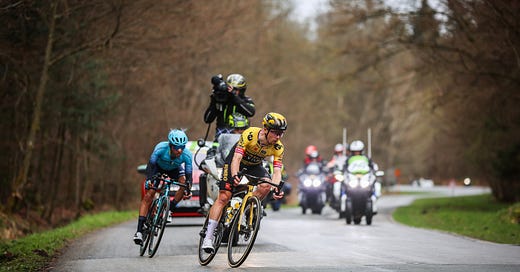I’ve been sitting here for over an hour thinking about what to write about this edition of the men’s Liège. Much, of course, can be said of Remco Evenepoel’s characteristically masterful performance, which is becoming textbook (often to the bane of fans’ existence): he attacks with 30 kilometers to go and finishes solo. Notably in th…
Keep reading with a 7-day free trial
Subscribe to derailleur to keep reading this post and get 7 days of free access to the full post archives.




